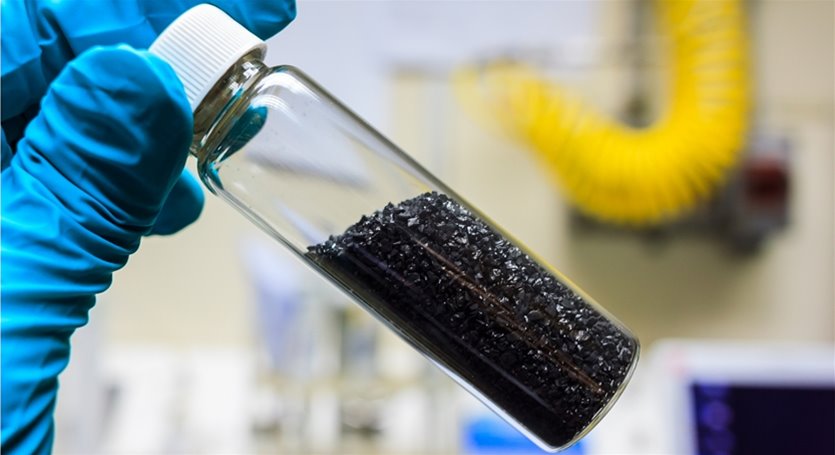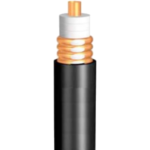Rubber is a flexible material that is used in a variety of products, including conveyor belts, tyres, and seals. One of the crucial components of rubber is carbon black. A type of carbon called carbon black is generated when hydrocarbons burn partially. We will explore carbon black’s vital contribution to the manufacture of quality mechanical rubber goods in this article.
What is Carbon Black?
Elemental carbon is used to create the fine powder known as carbon black. It is created by burning hydrocarbons in an atmosphere with little oxygen. Following collection, the resulting carbon black particles are processed into a fine powder. Due to its capacity to enhance the physical characteristics of rubber, carbon black is a frequently used ingredient in rubber formulations.
There are various different forms of carbon black, each with its own unique qualities. Furnace black, channel black, and thermal black are the three most popular varieties of carbon black used in rubber compounding. Due to its excellent purity and reliable qualities, furnace black is the form of carbon black that is most frequently utilised.
The Role of Carbon Black in Rubber Compounding
Carbon black is essential when making rubber compounds. It is included in rubber compositions to enhance the finished product’s mechanical qualities. Rubber can have its tensile strength, tear resistance, and abrasion resistance increased by adding carbon black. It also aids in making rubber compositions more processable.
Concentrations of 20–50% carbon black are commonly added to rubber compositions. The specific application and the required qualities of the finished product will determine the precise amount of carbon black to be used. Rubber compositions may also include other additives than carbon black, such as processing aids, accelerators, and antioxidants.
Benefits of using Carbon Black in Mechanical Rubber Goods Production
When making mechanical rubber products, carbon black has a number of advantages. The improvement of mechanical qualities is one of the main advantages. Rubber can have its tensile strength, tear resistance, and abrasion resistance increased by adding carbon black. This makes mechanical rubber goods more durable and able to withstand harsh environments.
Another benefit of employing carbon black is enhanced processability. Rubber compounds’ flow characteristics can be improved by carbon black, making them simpler to process and mould. Costs may be decreased and production efficiency may increase as a result.
Carbon black also helps to reduce the cost of rubber compounding. By improving the mechanical properties of rubber, less material is needed to achieve the desired properties. This can lead to cost savings for manufacturers.
Types of carbon black utilized in Rubber Compounding
There are several different types of carbon black used in rubber compounding. The most common types are furnace black, channel black, and thermal black. Furnace black is the most widely used type of carbon black due to its high purity and consistent properties. Channel black is a lower-cost alternative to furnace black, but it has a lower purity and more variable properties. Thermal black is a specialty carbon black that is used in high-performance applications.
The specific type of carbon black used will depend on the desired properties of the final product and the specific requirements of the application. In general, furnace black is the preferred type of carbon black for most mechanical rubber goods applications.
Factors to Consider when Using Carbon Black in Rubber Compounding
When using carbon black in rubber compounding, there are several factors to consider. One of the key factors is the concentration of carbon black in the rubber compound. The exact amount of carbon black used will depend on the desired properties of the final product and the specific application.
Another factor to consider is the particle size and structure of the carbon black. Different types of carbon black have different particle sizes and structures, which can impact the properties of the final product. It is important to select the appropriate type of carbon black for the specific application to ensure optimal performance.
The processing conditions used during rubber compounding can also impact the properties of the final product. It is important to carefully control the temperature, pressure, and mixing time during compounding to ensure consistent properties.
How Carbon Black Impacts Rubber Properties
Carbon black has a significant impact on the properties of rubber. One of the key properties that is impacted is the tensile strength of the rubber. Carbon black can significantly increase the tensile strength of rubber, making it more durable and able to withstand harsh environments.
Carbon black also impacts the tear resistance and abrasion resistance of rubber. By improving these properties, mechanical rubber goods are able to withstand the wear and tear of everyday use. This makes them more durable and longer-lasting.
In addition to mechanical properties, carbon black can also impact the electrical conductivity and UV resistance of rubber. By carefully selecting the appropriate type of carbon black, manufacturers can ensure that mechanical rubber goods are able to perform optimally in a wide range of applications.
Carbon Black Safety and Handling
While carbon black is a commonly used additive in rubber compounding, it is important to handle it with care. Carbon black is a fine powder that can be easily dispersed in the air, which can pose a respiratory hazard. It is important to use appropriate personal protective equipment when handling carbon black, such as respirators and gloves.
The Future of Carbon Black in Mechanical Rubber Goods Production
Carbon black is expected to continue playing a crucial role in the production of high-quality mechanical rubber goods. As technology advances, there may be further developments in the production and use of carbon black, such as the development of new types of carbon black or the optimization of processing techniques. However, the fundamental benefits of carbon black in improving the mechanical and processing properties of rubber are likely to remain important considerations for manufacturers of mechanical rubber goods.
Conclusion
Carbon black used in rubber, for improving their mechanical properties and process ability. The type and concentration of carbon black used must be carefully considered and appropriate handling precautions taken due to its potential respiratory hazards. By selecting the appropriate carbon black, manufacturers can ensure that their rubber products meet the desired performance requirements.


